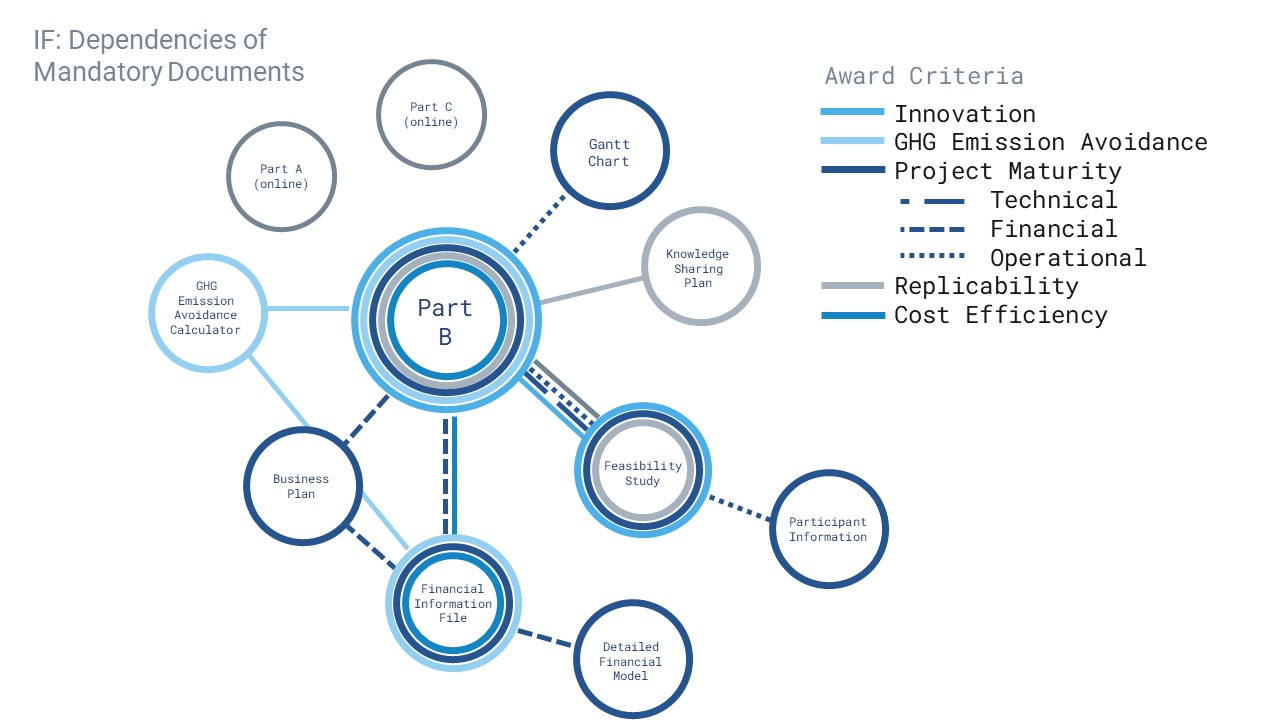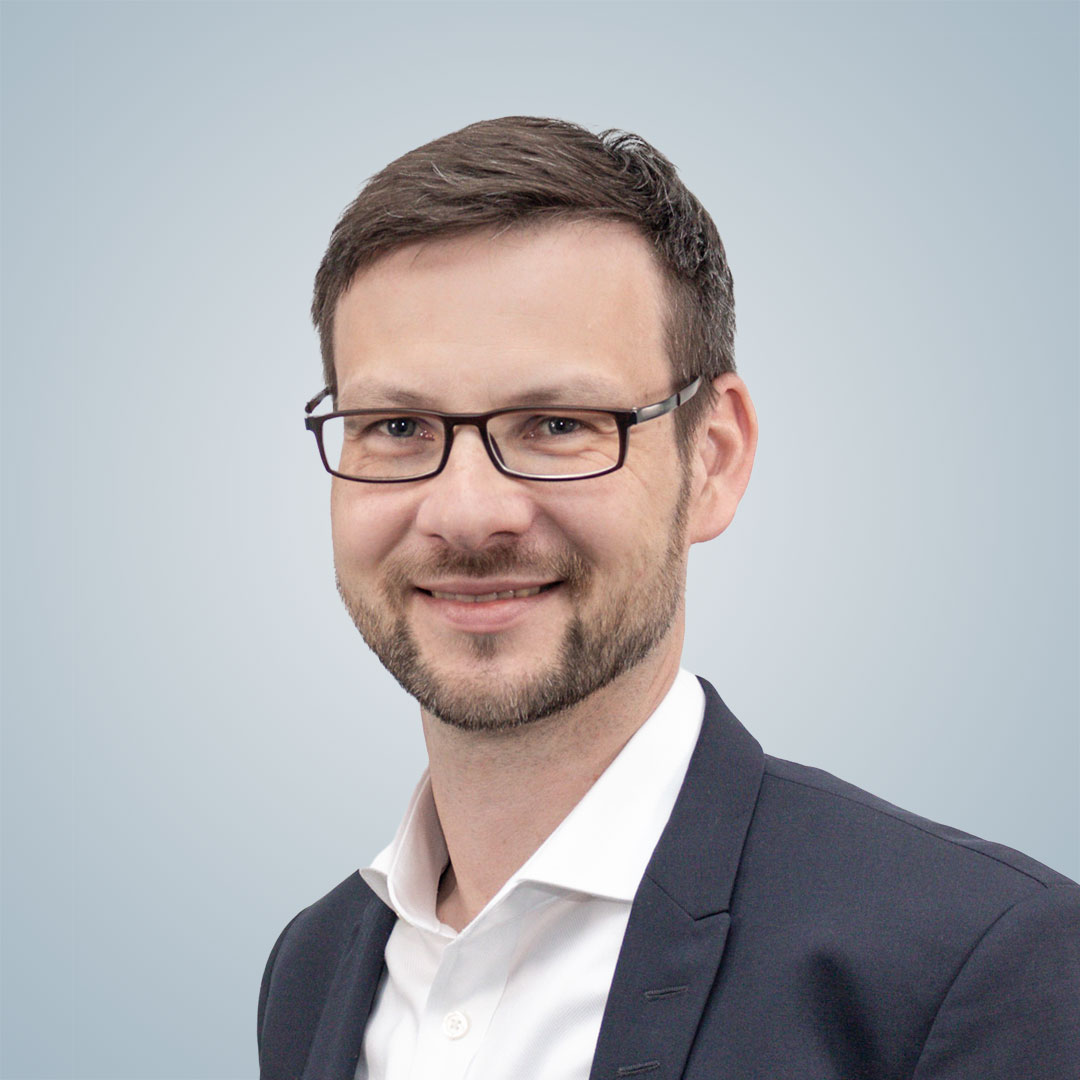- Olga Schmidt
- 12.12.25
- 2 min
- Success factor sustainability
Your contact person
Dr André Nadolny
+++ Innovation Fund blog series (part 3) +++ An Innovation Fund application is one of the most complex funding applications in the European Union. It comprises eleven mandatory application documents and annexes totalling 200 to 300 pages, supplemented by additional supporting documents as required. Experts assess this application based on five main criteria: degree of innovation, GHG avoidance potential, project maturity, replicability and cost efficiency. Part B, with a maximum length of 80 pages, forms the centrepiece of the entire application. This is where all the information from the various individual documents flows together and is linked to form a complete work.
+++ Our blog series on the Innovation Fund +++
|
Let's start with a fundamental aspect – the form. There is a template for part B of the Innovation Fund application that must be used. There are also clear specifications regarding font sizes, margins and other formal requirements. One special feature is that it is a so-called "tagged" document that uses text tags to mark the various sections. These – as well as the notes they contain – must not be deleted.
The template specifies exactly what content should be provided by the applicant for the individual evaluation criteria. It is crucial that all detailed questions are answered - omissions will quickly lead to points being deducted. Given statements should also always be backed up with reliable data, e.g. by referring to the relevant sections of the accompanying document. The consistency of the data across the various documents is also a relevant quality criterion for the application.

Part B of the Innovation Fund application consists of eight main chapters that are assigned to an evaluation criterion. However, they are also interrelated, as the diagram illustrates.
In the first chapter, not only the project background, project objectives and the consortium should be presented, but also a general overview of the technical characteristics and scope of the project is expected. This includes a detailed description of the chosen technological approach and the planned technical implementation. Even though this section is numbered "0" in the template, it should not be misinterpreted as a mere introduction. The last part in particular is relevant for the evaluation criterion of technical project maturity.
In this chapter, the innovation performance of the project is presented in comparison to the state of the art. Here it should be carefully worked out that it is more than an incremental innovation (step-by-step improvement), for which quantitative measurement criteria or performance data should also be used. This is particularly important for applications in the "Clean Manufacturing" and "Pilots" categories, as the degree of innovation is weighted twice here. All claims made should always be backed up with evidence, e.g. with precise references to the feasibility study or any existing technical due diligence documents.
For a comparison with the state of the art, reference should be made to publicly available documents with European relevance, e.g. the Strategic Research and Innovation Agendas (SRIA). An exception applies to small-scale projects (capital expenditure < €20 million), as a comparison with the national rather than the European state of the art is sufficient here. A differentiation from already funded Innovation Fund and EU projects is also expected.
This chapter deals with the absolute and relative greenhouse gas avoidance potential of the project. The assumptions made for the CO2 avoidance calculation must be briefly explained, especially if they deviate from the recommended standard.
The replicability of the project is considered on the basis of two main aspects: firstly, the replicability at the primary site and secondly, the quantitative potential for other sites. Important key points are the associated environmental impact, possible effects on the resilience of European industry and the potential creation of new value chains. To this end, detailed, credible plans for cost reduction or transferability to other locations should be addressed. In addition, the project-specific communication strategy is summarised, including appropriate references to the Knowledge Sharing Plan.
The cost efficiency combines the relevant costs and the CO2 avoidance potential. The cost efficiency calculation – including the assumptions made when calculating the relevant project costs - must be presented and referenced to the relevant documents.
The presentation of a solid work plan is the last important chapter in Part B. This includes a detailed description of all work packages, tasks, milestones and deliverables. This plan should be consistent with the Gantt chart, the financial planning and the project implementation plan and is an important component for assessing the operational maturity of the project.
EurA has gained extensive experience with the EU Innovation Fund programme in recent years. Are you interested and would like to find out more? Then contact our EU funding team. We will be happy to help you!
Text: André Nadolny

Your contact person
Dr André Nadolny
EurA AG
T- 079619256-0Max-Eyth-Straße 2
73479 Ellwangen
info@eura-ag.com